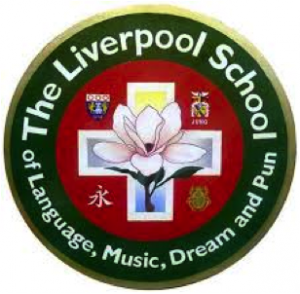Overview: A linked Set of Social Innovations Catalysing Community Development in Liverpool
The specific innovation has involved the creation of a new social enterprise (Birdsong Live Productions Community Interest Company; Company Number (UK) 10158995) to deliver the production of a new community-focused musical (Liver Birdsong – the Liverpool Blitz Musical), generating funds and establishing a social innovation eco-system to create two new community dramas – working with local communities in Toxteth (It’s a Riot!) and Knowsley (Shakespeare’s in Prescot), Merseyside – to help them tell their stories and increase their imagination and confidence for developing these inner-city areas of supposed ‘deprivation’.
Additionally, the processes for interpreting and critically analysing this innovation will be to look through the lenses of an integral hermeneutics models; a summary of ‘the fifth wave of solidarity economics’ (including the transformative work of Integral Economics) ; and sixteen steps towards engaging a local solidarity economy eco-system. The social innovation is, equally, understood as a reflection of the fourfold spiritual basis of Western economic culture, as reflected in what I, Tony Bradley, call the ‘biblical quaternity archetype’. The fruit of this process has been a linked set of social innovations that are catalysing community development through drama, music, the creative arts and work in social cohesion.
The Calling
My upbringing, as a child, in inner city Liverpool, has stayed with me throughout my life. But, it is only with returning to the city after thirty years away that the calling to community development was re-ignited. Jung had a dream about Liverpool, although he never visited, in which he saw this city as “the pool of life”. This led a group of philosophically minded “Scousers” to create the Liverpool School of Language, Music, Dream and Pun.
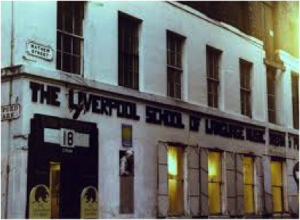
In Liverpool the fourfold is usually connected to a group of local lads, who transformed the world of popular music – named John, Paul, George and ‘Ringo’ – over a short period between 1962-69. But, in actuality, the creative arts, in music, drama, poetry, dance, painting, sculpture and architecture have been at the core of Liverpool’s innovative approach to life. The pool runs deep in the arts.
For me, it was always the mix of drama and music that held a fascination, which I could never escape in all the ventures I’ve been a part of. Equally, these have been integrally connected to my sense of Christian vocation and spirituality. Music is at the heart of worship. Drama is the basis of liturgy.
When I was a boy I sang in the cathedral choir of Liverpool Anglican Cathedral, of Christ the King. At school, I was the lead in plays and operas such as Jean Anouihl’s “Pauvre Bitos” and Benjamin Britton’s “Billy Budd”. Then, at University, I was a Director of the University Drama and Gilbert and Sullivan Societies. After University, I established my own semi-professional theatre company. And I always sang in choirs.
Over the years, as an Anglican Priest, I have been involved in a wide range of community development initiatives. Two of the most significant of these were the establishment of The Open Door, in Hampton Magna, Warwickshire, the county’s only fully Fair Trade café-shop and distribution centre; and, also, through Forward Vision Communications Ltd, producing many community films to help local organisations tell their stories. Through the café we used to organise local music events. Through the TV company, we engaged in many dramatic arts ventures.
As such, in returning to Liverpool, to engage in social innovation for community development, it was natural for me to look to the creative arts scene as one way into such societal entrepreneurship. By this terminology I mean to express that solidarity economies can be enabled through social enterprise that has a purposive objective of transforming society. Too often social enterprise is little more than business with a narrow social outcome. But, at its best, ‘green’ business can be fully transformative.
Innovation Eco-System
Creative arts are rarely a solo activity. And societal entrepreneurship is focused on moving beyond the ‘heroic model’ of solo entrepreneurs (usually “male, pale and stale”). In the model developed by Karin Berglund and her team at Stockholm University, societal entrepreneurship involves seeing how entire communities can be mobilised, through a process of story-telling based social innovation.
The process of this social innovation began in Toxteth, which is a locality famed for its riots in 1981, after the Margaret Thatcher-led Government, in the UK, introduced new ‘stop-and-search’ laws, which were used to target black youths on the streets of many British cities. Since then, Toxteth has struggled with a sense of alienation, stigma and deprivation, based in waves of new minority ethnic communities coming to reside in its neighbourhoods. In the 1980s it was Afro-Caribbeans. Today it is Somali, Eritraean and other sub-Saharan African communities that are the newest arrivals in Liverpool 8.
As such, I have been involved in developing a new festival for Toxteth entitled L8ED (meaning full of joy and passion), as part of a movement called Proud of Liverpool, led by an energetic septuagenarian, Val Price. Together with the teams from a renovated old music hall, The Florrie (Janine Ross), the local community leader at the self-styled “Toxteth Town Hall” (Tom Calderbank) and through a local media organisation “Toxteth TV” (Bill Mitchell) we have been engaged in the social innovation of a community jamboree, around food, football, fair trade and fun.
Of course, such ventures are not easy. Many of the most settled people who live (few work in paid employment) in an area such as Liverpool 8 have relatively chaotic lives. One of those mentioned above has family mental health problems, others have poor physical health, few can afford to travel and often as soon as any resources appear there is a ‘feeding frenzy’ to channel these into a personal venture.
After over a year of working in a very up-and-down way, with watching the rifts, fallings-out and challenges of those in this eco-system, I partially withdrew. It was at this time that our elder daughter, who is a professional musician, was taken seriously ill. One of the outcomes of this was that I offered to help her write a new amateur musical, to tell some of the stories of Liverpool during the Second World War blitz.
Liverpool was a major target for the German Luftwaffe because of its strategic significance as a port for the Atlantic convoy. One of the most significant events of the entire war was the bombing of the Durning Road Air Raid Shelter, on Nov 28th, 1940. We made that the focus of a show, telling the story of four (sic) ‘Liver birds’ who worked at the Kirkby Munitions Factory, who go out for a night on the town in Liverpool, on that night, and are caught-up in the conflagration. Each of their four lives is changed irrevocably, forever. The story was fully grounded in the experiences of the community, many close to Liverpool 8.
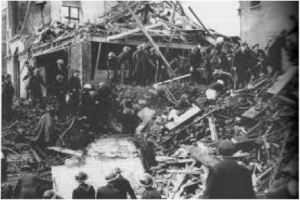
Surprisingly to us, the emergent drama and music touched a chord with many professionals in the theatrical community, so that The Epstein Theatre asked to take it as one of their main shows for Autumn, 2016. The result of this has been to very significantly increase our navigation of a technical eco-system, surrounding the social innovation, to include theatre producers (Rebekah Pichilingi, Josh Rowe and Heidi Birchall), directors (Jodie Marshall, Jen Hayes), technical teams (LIPA, Arup Engineering, Alex Howarth), actors (Charlie Gilbert, Lynsey Butler, Brian Dodd), musicians (Billy Hu, Stephen Pratt) and many others.
In addition, this innovation has, now, connected back to the “L8ED – what’s great about L8?” initiative, so that one of the first outings for many of the songs from the musical will be at The Florrie, as part of L8ED, on September 9th, 2016. Furthermore, the effecting of a commercial, professional musical has, also, opened the door to new community developments in Knowsley, through First Ark, the Borough’s leading social housing provider and a new community production, written and performed by locals, in their own arts-based community development, in Toxteth. The further development of this set of linked social innovations is part of an unfolding narrative.
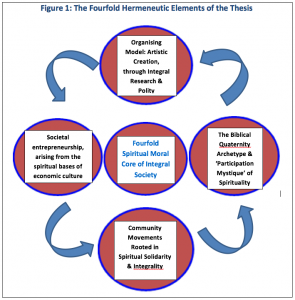
Integral Innovation
The fourfold hermeneutic elements model (above) indicates some of the ways in which the practical innovation eco-system is integrated to a wider understanding of social innovation through spirituality and the creative arts. The axiomatic principle that underpins the theory of integral economics is that there is a spiritual moral core at the heart of all economic systems. As such, an important aspect of this research has been to demonstrate that this moral core is – prior to the elaboration of the four worlds (S, E, N and W) – in itself fourfold.
Right back as far as the ancient Greeks (and earlier) human consciousness, nature and the virtues were identified as having four essential characteristics. The Greeks referred to these as the humours, connected to the fundamental elements (phlegmatic-water; sanguine-air; choleric-fire; and melancholic-earth). Within Greek religious culture these were associated with the way in which the gods had organised the world.
The fourfold moral core
Part of my research has been to uncover the way in which the fourfold inner dimensions of the moral core have been, partly, transmitted through the Judaeo-Christian Scriptures. As a practising Christian and Anglican Priest I was fascinated by the way in which the fourfold pattern is repeatedly found in the Bible. At a very superficial level I could see that the four (and only four) New Testament Gospel accounts of Jesus’ life, teaching, death and resurrection conformed remarkably to the pattern of both the Greek humours and the four worlds model of integral economics.
Luke’s Gospel (and The Acts of the Apostles) was essentially organised around the fluidity (water) of community and the flow of human relationships, like a river journey, inwards towards Jerusalem and, thence, outwards to the ends of the earth. Mark’s Gospel is another journey, but a far darker one, in which the powers of the spiritual realm (air) – that influence personal development – are directly encountered in a battle of blood, in which Jesus seems to have been defeated.
By contrast, John’s Gospel is more like a five act drama or a hinged book, organised in two main literary parts. It is passionate, fiery and, yet, the most rationally constructed and technical in its architecture, with a narrative that is much more symbolically structured. Finally, Matthew’s Gospel, which is, also, in five sections – to mirror the Pentateuch, the Law of Moses – is rather more earthy and, apparently, practical. It is directly connected to the morality of everyday pursuits, such as the ways in which we should engage in commerce and use money. Matthew’s Jesus is a judge of human affairs who engages with people in direct, pastoral encounters that bring the divine presence into the everyday.
In essence the New Testament Gospels provide four windows on the heart of God in Jesus Christ. They reveal that to understand God’s incarnate dealings with human beings we have to look through four lenses, in order to see the whole picture. The heart or core of Faith, which lies at the centre of all the worlds of global culture, is fourfold. But, when we go deeper, as my research has sought to do, we discover that this fourfold pattern of interpreting the inner core to moral life is repeated in layer after layer of the biblical canon.
There are at least seven strata to what I refer to – following Carl Gustav Jung’s model of the psyche – as the Biblical Quaternity Archetype (BQA):
- the over-arching theological structure of the Grand Narrative of salvation history (heilgeschichte), as Creation, Fall, Redemption and Salvation or Grace, Sin, Atonement and New Creation, which closely mirror the integral economics four worlds, beginning in the South (nature and community), East (personal and spiritual development), North (ways to navigate safely), West (effected futures – through politics and markets – for the real world).
- internal structure of both Jewish and Christian Scriptures, divided into Law, Histories, Prophets and Wisdom (Jewish) and Gospels (narrative), History (Acts), Epistles (letters of practical wisdom) and Apocalyptic (such as the Book of Revelation), within the Christian New Testament.
- textual traditions, such as JEDP in the Jewish Law and the four Gospels in the New Testament.
- archetypal and psychological characterisations, identified in psychological biblical criticism (see Wayne Rollins), which reflects Jungian psychological types (popularly recognised in such systems as Myers-Briggs Type Indicators).
- fourfold interpretive structures in both Jewish (rabbinical) and Christian (scholastic) hermeneutical methods.
- fourfold historical geography of centres through which canonical formation took place e.g. Antioch (Luke), Alexandria (Mark), Ephesus (John) and Jerusalem (Matthew).
- literary forms of wisdom, prophetic and other genres within the Scriptures, which often has a fourfold construction.
The significance of this perspective is to demonstrate that within the spiritual/ cultural tradition that I am most familiar with, there is an ancient wisdom of integrality, which is parallel to many other traditions, such as indigenous cultures and other major Faiths e.g. Islamic, Vedic, Buddhist. The relevance is that within the post-postmodernity ‘age of integrality’ it should not surprise us that new socio-political, religious, intellectual and economic-business model are arising which reflect the (ancient) internal, fourfold moral core, which lies at the heart of the collective unconscious of the human psyche, worked-out in a myriad of different ways.
Social innovation through creative arts
One of the specific ways in which the inner spiritual is manifested in cultural forms is through the creative arts, especially drama and music. Furthermore, these have become – within Britain and in cities such as Liverpool – major focal points for effecting new enterprises and social innovations. Britain is recognised as one of the world’s leading centres for the creative industries. Liverpool is famed as an iconic city that has produced more popular music bands, comedians, writers, poets and actors per capita than any other UK community.
In this sense, it seemed only natural that to engage a community movement for solidarity and spiritual integrality in Liverpool should begin from the creative arts. The initial impetus for this came from some of the team involved in the spirited but flawed L8ED project in Toxteth. But, the real spur to the innovation came through a personal family crisis that stimulated a new direction of creativity and, thus, emerged out of our personal community and calling.
Our elder daughter, Rebecca was taken seriously ill in a most unusual way, which mirrored a spinal injury I had experienced eleven years earlier. Unconvinced by the medical treatment we were receiving in our, relatively isolated, home area of West Cumbria (the English Lake District) we rushed Rebecca to the neurological centre in Liverpool. From her hospital bed she announced that she had the idea for a new musical based on the emancipation of women in Liverpool during the Second World War.
This gave me the impetus to support our daughter by offering to help write the musical with her. She is a graduate in Drama & Music, from the University of Hull and a semi-professional musician, who specialises in composition. Over a remarkable six weeks period in Feb-March, 2015, I found myself writing scenes and the lyrics for songs during each commuting car journey between The Lakes and my University job in Liverpool. At the end of this burst of activity we had a complete script for a full-length musical, with eighteen new songs and a plot that sought to reflect both the way in which womens’ lives changed as a result of their working on the ‘home front’ and the remarkable story of the city’s people during the Liverpool Blitz.
Liver Birdsong – The Liverpool Blitz Musical tells the story of four women (‘liver birds’) who work at the Kirkby Munitions Factory, one of the Royal Ordnance factories created by the Wartime British Government. They decide to go out for some fun on the night of the 28th November, 1940 and are caught-up in an event that became known as the Durning Road Bombing. Winston Churchill, the Wartime Prime Minister, described this episode as ‘the most serious civilian incident of the entire Second World War’. It was only known about on Merseyside by those who had taken a particular interest in the city’s wartime history.
But, it is one thing to emerge a new piece of creative art. It is quite another to navigate the way towards its production and a further set of steps to effect a social innovation through it. The first significant step was to form a new social enterprise, under the legal strictures of a Community Interest Company. The purpose of this legal form, which is carefully monitored by the CIC Regulator, within the UK Companies House, is to create an asset-locked enterprise, whereby any profits from trading must be ploughed-back into the company’s primary purposes rather than paid as dividends to shareholders. In this way the company acts to create a local community social innovation.
We established the new CIC with the following purpose statement:
The company’s activities will provide benefit to:
COMMUNITY THEATRE AND ARTS GROUPS, INVOLVED IN COMMUNITY DEVELOPMENT, STORY-TELLING, SOCIAL INCLUSION, ESPECIALLY IN THE LIVERPOOL CITY REGION AND CUMBRIA. THEY WILL BENEFIT BY BEING INVOLVED IN A RANGE OF COMMUNITY PRODUCTIONS, BEGINNING WITH “LIVER BIRDSONG – THE LIVERPOOL BLITZ MUSICAL”,WHICH TELLS THE STORIES OF SIGNIFICANT EVENTS IN LIVERPOOL’S RECENT HISTORY, ESPECIALLY THE LIVERPOOL BLITZ, IN THIS 75TH COMMEMORATION YEAR, WHICH HELP THE COMMUNITY, INCLUDING OLDER PEOPLE, RECOGNISE THE IMPORTANCE OF EVENTS THAT THEY’VE LIVED THROUGH AND BEEN INVOLVED IN.
THEATRE, DRAMA, MUSICALS AND MUSIC PROVIDE AN IMPORTANT VEHICLE AND RANGE OF MEDIA FOR HELPING WITH COMMUNITY DEVELOPMENT, ENGAGEMENT AND SOCIAL INCLUSION. THE PRODUCER AND OTHER CREATIVES BEHIND BIRDSONG LIVE PRODUCTIONS HAVE EXPERIENCE IN COMMUNITY DEVELOPMENT, MUSIC THERAPY AND DRAMA-IN-THE-COMMUNITY. THE WORK OF BIRDSONG LIVE PRODUCTIONS COMMUNITY INTEREST COMPANY WILL ENABLE THE PROCEEDS OF PROFESSIONAL THEATRE TO BE USED TO ADVANCE FUTURE COMMUNITY THEATRE PROJECTS, WHICH ARE IN DEVELOPMENT.
This pointed to the nature of the step-process of the CIC. Our first task was to emerge the initial production of the Blitz Musical. From there we would navigate the company to engage with others in local community development, through drama, music and the creative arts. The further step would be to emerge a range of social innovations that develop out of the initial work of Birdsong Live Productions CIC.
Social innovation process and prospects
In fact, the process towards social innovation has been far more direct than we might have expected. Through the engagement of the professional company and creative team behind the initial show’s production (due for Nov 29th – Dec 3rd, 2016) we have seen the release of much energy for the social innovation envisaged. Some of the important advances have been in bringing together a wider community of creatives from a much broader range of organisations than we had expected; the stimulus to use innovative new funding streams; and the prospect of some further creative developments beyond those envisaged.
Although these are at a relatively early stage it is possible to sketch-out the way in which these aspects of innovation through societal entrepreneurship are beginning to take place, using the first part of the 16-step model indicated below.
People – enabling and activation
A script is just that. As our new Musical Director, Alan Moore, was able to say to me:
“Once the idea leaves your head, and the paper you’ve written it onto, it belongs to others. The show doesn’t belong to the writers. It is the act of a community. It doesn’t exist until the community owns it, makes it and delivers it to an even wider community, who are willing to receive it.”
This brought the step of moving from ‘ego-activism to group activation’ into sharp relief. But, as both the writer and the Producer of the show it was my task to bring this initial community together. This involved appointing the members of the creative team and working with the Director, Jodie Marshall, in casting and outlining the roles of the various team members. Because virtually all the members of this professional team were from Liverpool and its city-region this created its own synergy, whereby the team were able to envisage a way of telling the city’s story which they felt was authentic to the ‘Scouse community’.
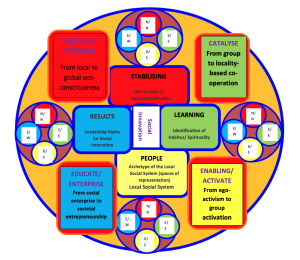
That said, some of the unexpected consequences of this, which were parts of the initial enabling/ activation process, revealed the way in which the archetype of the local social system and its ‘spaces of representation’ emerged. Using the model of organisational archetypes devised by Carol Pearson, it was clear that there was a natural homology between the creative team that was emerging and their view of the ways in which the Liverpool space is represented. The two dominant archetypes identified as being predominant within both the show’s team and the city’s population are one ‘freedom archetype’ – The Jester; and one ‘ego archetype’ – The Hero.
Liverpool is a city full of individualists who see themselves as both fun-loving and having the ability to make heroic interventions. We are still at an early stage of emerging the process of people activation to one of learning how to catalyse a local habitus, which releases spirituality through the creative arts. Even so, we are sufficiently advanced to see that the rotation around the initial cycle of the GENE/ SENW, from generating a local community of creatives; through emerging their common sense of being; to navigating a method for community development, by utilising their various technical and artistic abilities; is leading towards some new social enterprise and innovation effects.
The first of these represents an engagement with new models of financing community social innovation. The second indicates the ways in which this process of community activation will be further catalysed for expanding the circle of the creative arts and drama community. In terms of financial models the work of Birdsong Live Productions CIC has attracted the interest of a new social innovation fund, being developed under the auspices of Big Society Capital in the UK.
As such, we have been invited to take an equity-free, low interest debt holding in order to develop the social cohesion through community arts work, within the Knowsley Borough, an area of housing and factories that was partly constructed on land that had been released after the demolition of ROF Kirkby. In addition, the work we’re doing has brought us into contact with four other theatres in Liverpool that are engaged in some forms of community outreach and activation. These are the Everyman, Playhouse, Royal Court and Unity theatres.
In this respect, we are just beginning to see that the social innovation that is emerging through Liver Birdsong and its after-math is part of a much wider activity of societal entrepreneurship and uncovering what Jung called the ‘participation mystique’ in The Pool of Life. There is, within the habitus of the Liverpool culture, a continuous and cyclical emergence of a particular form of distinctive economic culture. It is one that is more used to using the language of spirituality more formally than many, given the religious background to much of Liverpool’s life.
Equally, these social innovations make sense of the BQA, in terms of ‘community-bearing’ (the Lukan South); seeking to reconcile inner-outer conflicts in social reconciliation (the Markan East); seeing a bigger picture of education-through techniques of artistic innovation (the Johannine North); and implementing a practical ethics of new social enterprise for social solidarity (the Matthean West). That said, we are still fairly close to the beginning of a journey.
But, it is one that is rapidly developing, in ways that some of the earlier attempts at community activation through more traditional models were not. The extent to which these social innovations in Liverpool arts will be transformative remains to be seen. But, the signs of an emergent participation mystique for connecting the city to its historical narrative through creative arts, in order to ground it’s community’s heart, emerge its personal soul, navigate beyond a traditional mind and effect a new corporate solidarity strength are very hopeful.
